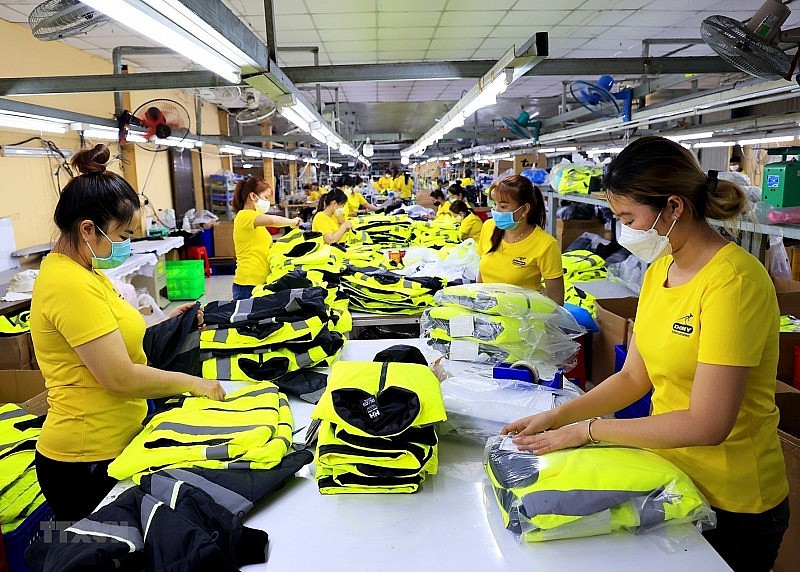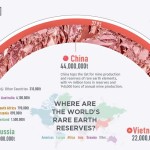Total number of posts 435.
Advantages from CPTPP
On October 24, Ontario's Ministry of Trade, Employment and Economic Development cooperated with the Vietnam Trade Office in Canada to organize a preliminary workshop on the 10-year implementation of the Comprehensive and Progressive Agreement for Trans-Pacific Partnership (CPTPP) and promote trade and investment in Vietnam.

Photo: Hong Dat/VNA
At the seminar, Vietnamese Ambassador to Canada Pham Vinh Quang said that Vietnam and Canada are members of CPTPP, a trade bloc representing 500 million people with a GDP of about CAD 13.5 trillion, which has brought new opportunities for economic, trade and investment relations between the two countries. By leveraging Free Trade Agreements (FTAs), especially the CPTPP and the ASEAN-Canada FTA being negotiated, the two sides can harness the full potential of this vibrant region and create a foundation for shared growth and prosperity.
Chinese Canadian Business Association President Yvonne Chan also said that there are many opportunities for Canada and Vietnam to work together, especially by leveraging Vietnam as a gateway to ASEAN. Vietnam, as an active member of ASEAN, is at the center of a rapidly integrating region with more than 680 million consumers. The ASEAN Economic Community is offering a large market with diverse opportunities in many fields.
Commercial Counselor, Vietnam Trade Office in Canada - Ms. Tran Thu Quynh assessed that Ontario is a province contributing up to 40% of Canada's GDP and is also home to large corporations and investment funds. "Through the seminar, Canadian corporations and investment funds will pay more attention to Vietnam and through Vietnam to access the ASEAN market," Quynh said.
Since the CPTPP Agreement came into effect, the Vietnam Trade Office in Canada said that Vietnam's export turnover to Canada has increased by nearly 60%, from 3.8 billion USD in 2018 to over 6 billion USD in 2021. According to Ms. Tran Thu Quynh, among CPTPP member countries, Vietnam is the country that has best exploited the Agreement to enter the Canadian market.
Accordingly, with the competitive advantage due to enjoying preferential import tariffs (tariff reduction of up to 94%), Canadian businesses are increasingly interested and have a better awareness of Vietnam's products and production capacity. In the purchasing strategy of Canadian businesses, Vietnam is emerging strongly thanks to the factor of "stability, predictability and low price". "On the other hand, Vietnamese businesses are also increasingly taking advantage of FTAs to explore foreign markets, reflected in the increasing proportion of enterprises understanding the CPTPP and using the CPTPP form C/O over the years" said Ms. Tran Thu Quynh.
Improve export capacity to the market
Over the past time, the Vietnam Trade Office informed that, in addition to the products we have strengths in the market such as textiles and garments, footwear, since the CPTPP, many domestic industrial goods of Vietnam such as wooden furniture, lights, toys, sports equipment, iron and steel, products from rubber, plastic, aluminum, glass ... all have very high growth rates.
Notably, the Vietnam Trade Office in Canada informed that the Canadian market also has great demand for some potential product areas of Vietnam such as: Power cables and small electrical appliances (lamps, sockets, extension cords ...); household plastic products, plastic bags and toys; paper and carton products; adorn; plastic aluminum doors and rolling windows; Organic cosmetics and aromatherapy, handicrafts, glass, household ceramics and hygiene...
However, the Canadian market is a high standard market, with many competitors interested in the market, not only from within the CPTPP but also businesses from South America. Geographical distance, high standards, high market penetration promotion costs, high shipping prices... are all factors that make it difficult for Vietnamese enterprises to compete to penetrate the market.
More obstacles, Ms. Tran Thu Quynh pointed out that small-scale enterprises are especially difficult to access because they are not capable of ensuring supply. In addition, the level of awareness of Canadian consumers towards the quality of Vietnamese products is still low. The relatively large "inertia in the business culture" of Canadians are all barriers preventing Vietnamese goods from entering the market.
In the future, in order to better exploit the CPTPP Agreement, improve export capacity to the Canadian market, Vietnamese businesses and trade offices in Canada recommend that enterprises need to pay more attention to understanding the market, understanding local tastes and regulations; proactively improve quality and standards; Create designs and expand production scale. In particular, in addition to ensuring price competitiveness, we must pay attention to rules of origin, environmental values and fair trade in business and ensure stable supply.
Ms. Tran Thu Quynh emphasized that exploiting FTAs in general and CPTPP in particular is not only exploiting tax incentives to promote short-term exports, but Vietnam and Canada have many complementary advantages to jointly exploit. Businesses need to target greater opportunities such as production, investment, technology and brand connectivity between the two countries to create higher value chains. In particular, businesses need to pay attention to opportunities to participate in government procurement, government bidding, PPP cooperation abroad that CPTPP brings.
In addition, as a country with an extensive network of Free Trade Agreements, Canada is interested in promoting businesses to take advantage of Free Trade Agreements (principle of aggregate origin) for export and co-production. The two sides have a lot of potential to connect production, cooperate in OEM outsourcing for Canadian brands, use materials from Vietnam, produce in Vietnam for Canada to export to third country markets (in CPTPP and ASEAN (Canada-ASEAN FTA outlook).
Cooperation in the field of logistics, logistics and container operation under the Vietnam Trade Office in Canada also needs to be strengthened between the two countries. Currently, the shortage of containers has pushed up shipping prices in both Canada and Vietnam, affecting the export capacity of both countries. Canada is also interested in cooperating with Vietnam to improve the performance of the two countries' transport capacity, especially the ability to open direct shipping routes between the two sides of the Pacific Ocean. "If businesses of the two countries can make good use of shipping rules, Canadian goods into ASEAN and vice versa of Vietnam into North America will be more competitive in terms of" - Ms. Tran Thu Quynh noted.














